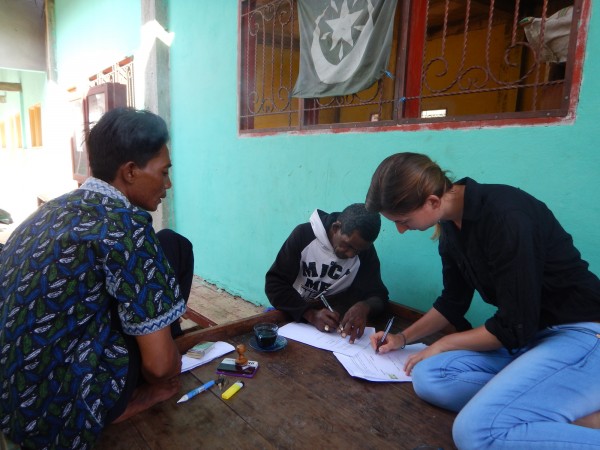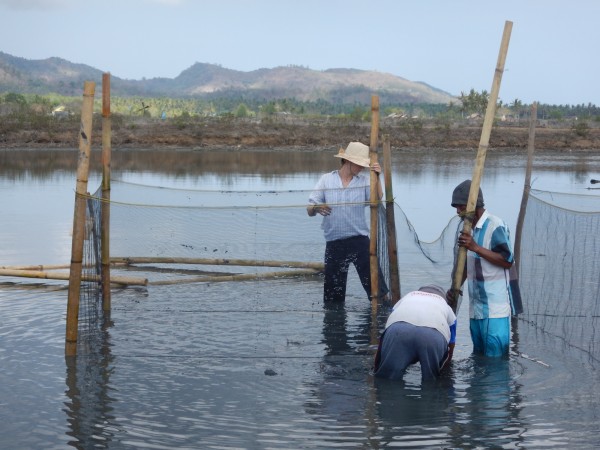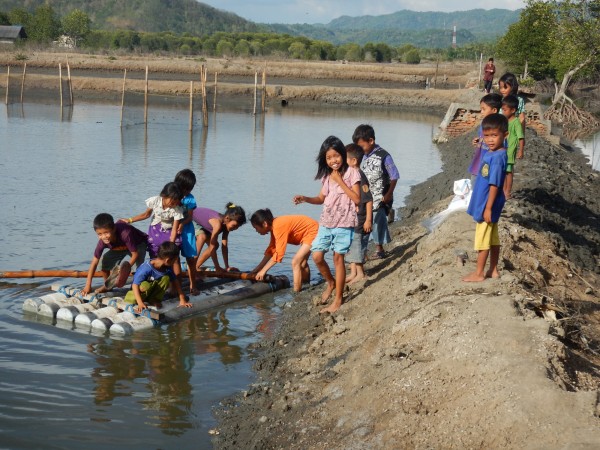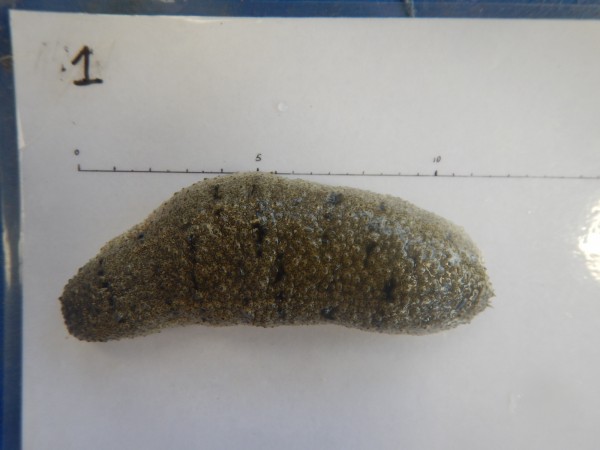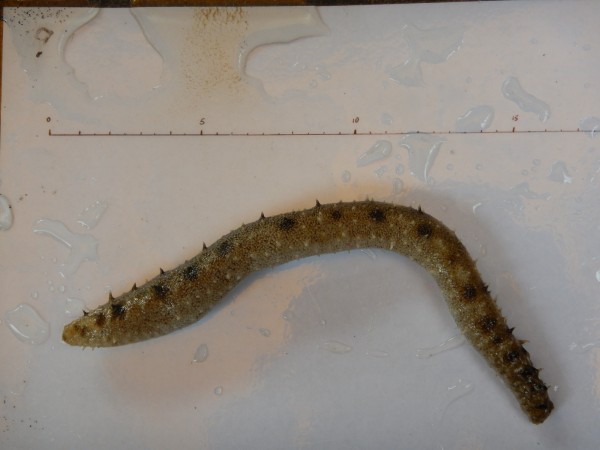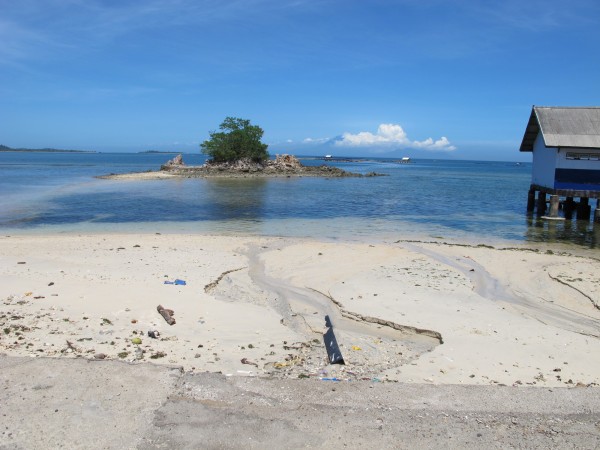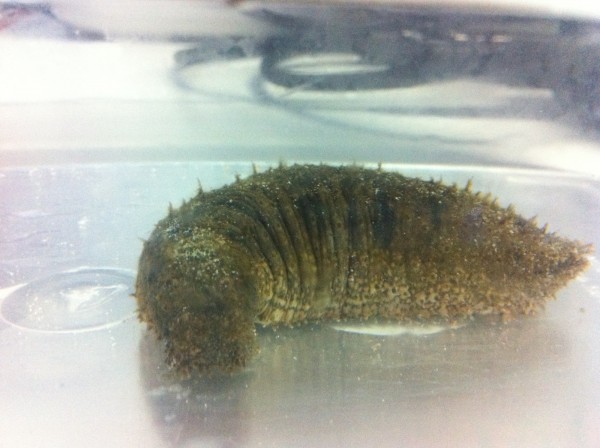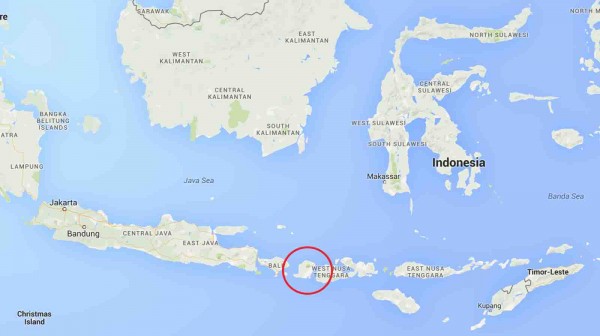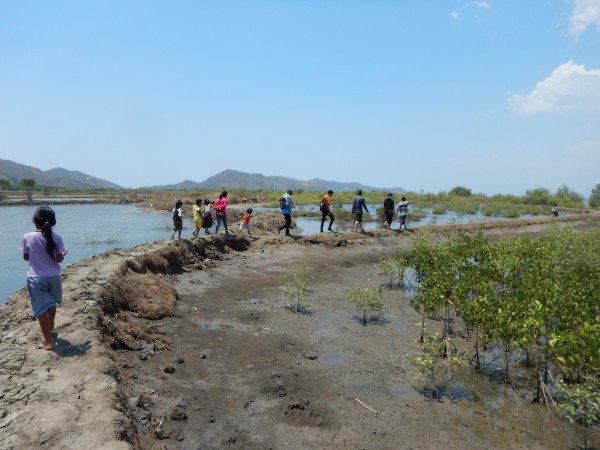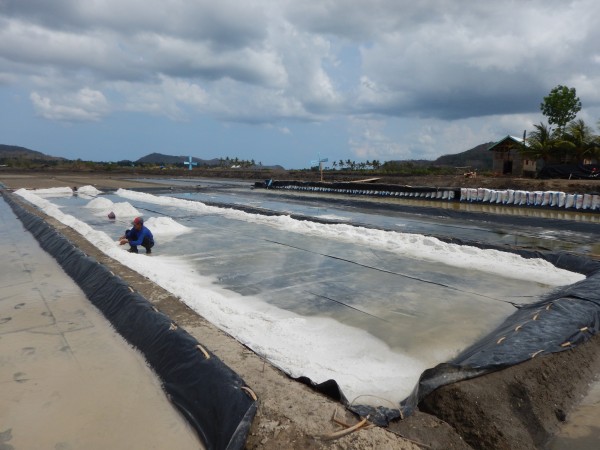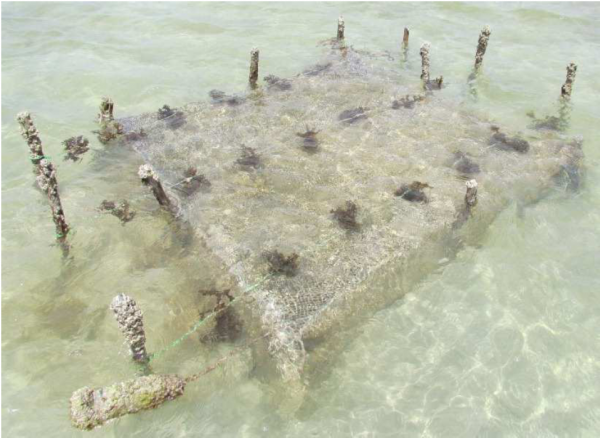Dieser Text ist zur Zeit nur auf Englisch verfügbar...
For my MSc project on the island of Lombok, Indonesia, I will conduct an experiment on the co-culture of sea cucumbers with seaweed and investigate if this type of aquaculture could be adopted by the local community. My research will support the PhD thesis of Stefan Partelow, which is part of the RECODE project – Revising and Comparing Social-Ecological Systems – with the working group of Institutional and Behavioural Economics under the supervision of Achim Schlüter, who is also one of my supervisors. His project uses the Social-Ecological Systems framework, SES framework for short, in three different tropical locations. The framework helps the researcher to identify variables that are relevant to understand how human users interact with a natural resource, inlcuding factors such as the characteristics of the resource itself, informal social rules for its use or government regulations. Stefan wants to compare how the framework can be used in different locations and one of those locations is my case study on Lombok. I will be using the framework to examine existing aquaculture activity in a rural community in the West of the island and to answer the question if sea cucumbers could be successfully cultured there as an additional source of income.
1.3.16
Lombok
In my last post, I had written about my experimental pond that only needed to be stocked with sea cucumbers and my experiment can be started. However, getting sea cucumbers during this time of the year turned out to be more difficult than expected. The first tentative phone calls we had made to fishers had sounded very positive along the lines of: „Yes, there are many of that kind, tell me the night before you want to pick them up and I will collect them.“ But once we asked more concretely, they suddenly became much harder to find. Our initial contacts told us there were none at the moment. Others would always get my hopes up at first, but in the end nobody was able to bring me any H. scabra. I knew that they had become rare due to overfishing, but that rare?!
An additional challenge was added through the communication. Although my translator Yani, born and raised on Lombok, is actually very good at getting the point across language barriers, he also realised that explaining what we need to fishermen in far-away corners of the island is not an easy task. Several times already I was brought the wrong species of sea cucumbers (some who do not even closely resemble the one we described). Another time the fisher did not know how to keep them alive and just dried them instead. And most days I was just being told that they cannot find any at the moment due to the moon.
Eventually, which seemed like a miracle to me, someone connected us to a fisher in a bay in the northeast of Lombok that apparently has a healthy population of H. scabra and he was able to supply plenty of the animals to stock my experimental cages. The sea cucumber problem was solved – but another problem had just become apparent – Lombok switches from the dry season quite abrubtly into the rainy season. We experienced a few days of very heavy monsoon-like rains and the water in the aquaculture ponds that I am studying changed salinity from about 40, which is more saline than sea water, to almost 20, which is much lower than H. scabra’s needs.
We did not expect such unstable conditions since the Indonesian government is conducting sea cucumber studies in a pond very close and similar to mine. So I suddenly had the sea cucumbers, but no place to put them! They would most likely have died in my experimental pond, especially if the salinity decreases further. For the time being, I am able to store them at a local research facility of the Ministry of Marine Affairs and Fisheries (KKP Sekotong) and I might even be able to move my entire experiment into the bay close to their facilities. This will however mean starting from the beginning and setting everything up again... but that is life when doing field research in a foreign country.
2.2.16
Lombok
I have been long due for another blogpost and a lot has happened since my first days in the Bertong community.
We finally found a suitable pond to conduct my sea cucumber experiment! After much consultation with the community leader, Lalu Sukri, as well as a government researcher who already cultivates sea cucumbers in an aquaculture pond, we decided on a pond that meets several criteria that make it great for my purposes:
1. Suitable water quality for sea cucumbers
2. Owner who is willing to rent it to me and available to help with maintenance
3. Short walking distance from the community and in view of the community leader's house, to prevent theft of the sea cucumbers
We then drafted and signed an MoU between me and the pond owner, Pal Ahmad („Pak“ is the Indonesian version of „Mr.“), that define the use of the pond, the length of my experiment etc.
Through our interviews, we have now learned that the pond system has been in existance for a long time already and the local families have used them for many generations. A few years ago, however, the land was bought by an outsider and converted into a shrimp farm. Large-scale shrimp production failed, however, the project was abandoned, and the ponds are once again used to feed the local community. All ponds were constructed in a mangrove ecosystem, which unfortunately lead to the cutting-down of the mangrove in most areas. We are still learning more about the current use of the mangrove for fire wood, collection of wild animals as well as the rules the community has for its resource use.
The sediment in the ponds is quite muddy, which makes it very hard to move around in them. I am experiencing this every month when I take water and sediment samples. Luckily, for the construction of my experimental cages, I was able to hire help and within two days the whole set-up was ready!
The algae, a species of Gracilaria, is already cultivated in the ponds, so now I only need to populate it with sea cucumbers – which is proving to be more of a challenge than we expected. More about this in my next post!
7.12.15
Lombok
After a few days in Jakarta to sort out my research visa, I finally arrived on Lombok! Here, I joined Stefan who is on the island for a few weeks to help me set-up my research. I was also finally able to meet Dr. Ocha Buhari, my local supervisor from the University of Mataram. Ocha has been very helpful in planning this whole project and continues to be absolutely essential in helping me get settled, find my way around and connecting me with other helpful people. On my first day here, Stefan and I had a meeting with a group of students and lecturers who are interested in our research, helped us figure out logistics and gave us a lot of good feed-back on our project plans.
They also took us on our first trip to visit the community that will be the focus of my study. The village is located in an area called Sekotong, south-west of the main city, Mataram. Planning our research, there had been a lot of uncertainty about where we should do our project, and I really did not know what to expect – are the people there primarily fishers? Or are they farmers? Will they even be interested in being interviewed?
When we arrived in the community, I was surprised to see that the villagers already conduct a lot of aquaculture in a large area of ponds adjacent to the village. We were shown around the ponds and learned that they use them to cultivate milkfish and seaweed, as well as to produce salt. And my initial worries were completely unnecessary. Everyone so far has been really helpful and open to answer our questions – and invite us to their house for some strong, incredibly sweet „Kopi Lombok“, the local way of making coffee. We have learned that there is a sort of aquaculture cooperative producing the salt as part of a government initiative. We are really interested to find out more about how they organise and collectively use the aquaculture ponds and if they would be interested in cultivating sea cucumbers. I am also in the midst of planning my sea cucumber experiment, so more news on that will come in the next post!
5.12.15
Lombok
Why sea cucumbers? Many might never have heard of this strange bottom-dwelling invertebrate, but in Chinese cuisine, it is a delicacy and supposedly an aphrodisiac. Many island nations, including Indonesia, fish and export tons of them. This has however lead to decreasing sea cucumber stocks in the wild and an interest of cultivating instead of fishing them. Students at the ZMT under the guidance of Andreas Kunzmann, head of the Ecophysilogical Working Group and my second supervisor, have previously done research on the possibility of cultivating sea cucumbers along with different types of algae on Zanzibar, Tanzania. The results look promising, so I am setting out to see if rural areas in Indonesia could do the same.
To prepare for my project, I first had to wrap my head around what the SES framework really is and how it is used, which can be very confusing for someone with little social-science training. What struck me though was that most cases of its application so far only used social-science methods to gather their data. The framework aims to be interdisciplinary though, so I want to make sure that I have an equally strong environmental-science component to my methods.
Besides interviews and surveys in the community, I will measure how sea cucumbers grow at different densities and how they as well as the algae affect the sediment and water parameters. The project is a good example for how different working groups at the ZMT combine their resources and expertise to work in an interdisciplinary way. With my two supervisors, one a natural scientist and one an economist, I am hoping to look at the whole picture of sea cucumber aquaculture.
I also got some first experiences measuring the sea cucumbers we have at the ZMT. In the field I will monitor their growth and it was good to practice this beforehand. It can be quite challenging to measure the weight of an animal that can take up water and expell it if it feels like it. Or to measure its length when it has what is known as “mutually connective tissue” and can loosen or tighten its muscles to be as long or as short as it wants to be.
So working with sea cucumbers is sure to be interesting and I am curious to find out how people in rural Lombok feel about doing it.
Paula Senff, WG Ecophysiology / Institutional and Behavioural Economics





